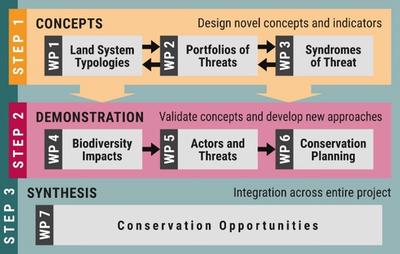SystemShift tests the central hypothesis that a land-system perspective will lead to improved conservation assessments and outcomes.

Three main STEPS
Designing new concepts and indicators to structure and map complexity in land-use actors and practices, and how these translate into threats to biodiversity.
Validating these new concepts through fieldwork on land-use actors and biodiversity impacts, as well as develop new conservation planning approaches based on these concepts.
Integrate and synthesise across project to develop a land systems framework for conservation planning and to detect conservation opportunities
Our focus is on:
Four main challenges that SystemShift addresses
How can the real-world complexity of land-use actors and practices be structured without over-simplification?
How do land-use actors and threats in land systems relate to each other?
How do different threats to biodiversity interact in land systems?
How can we better incorporate actors and dynamic threats in conservation planning?